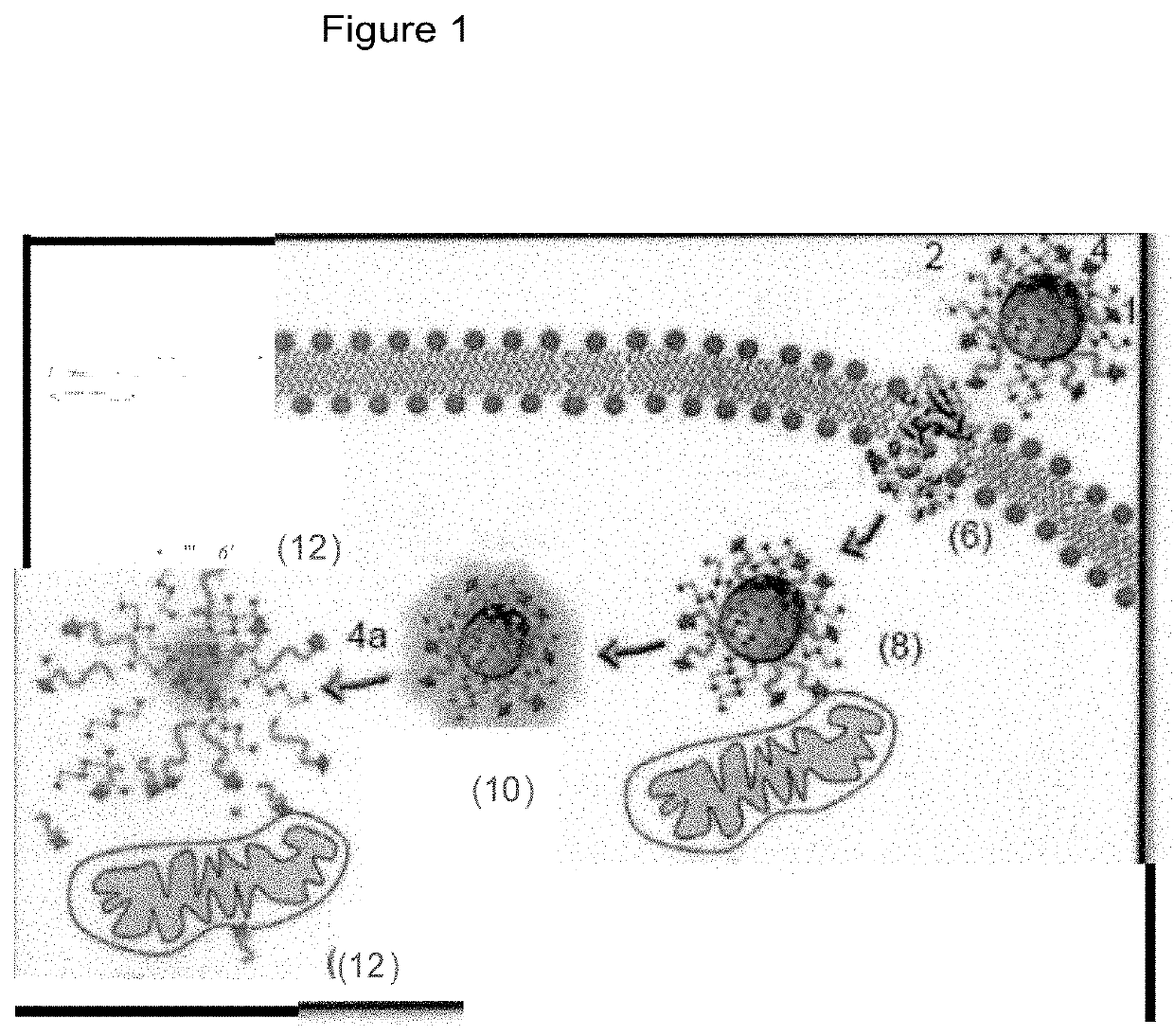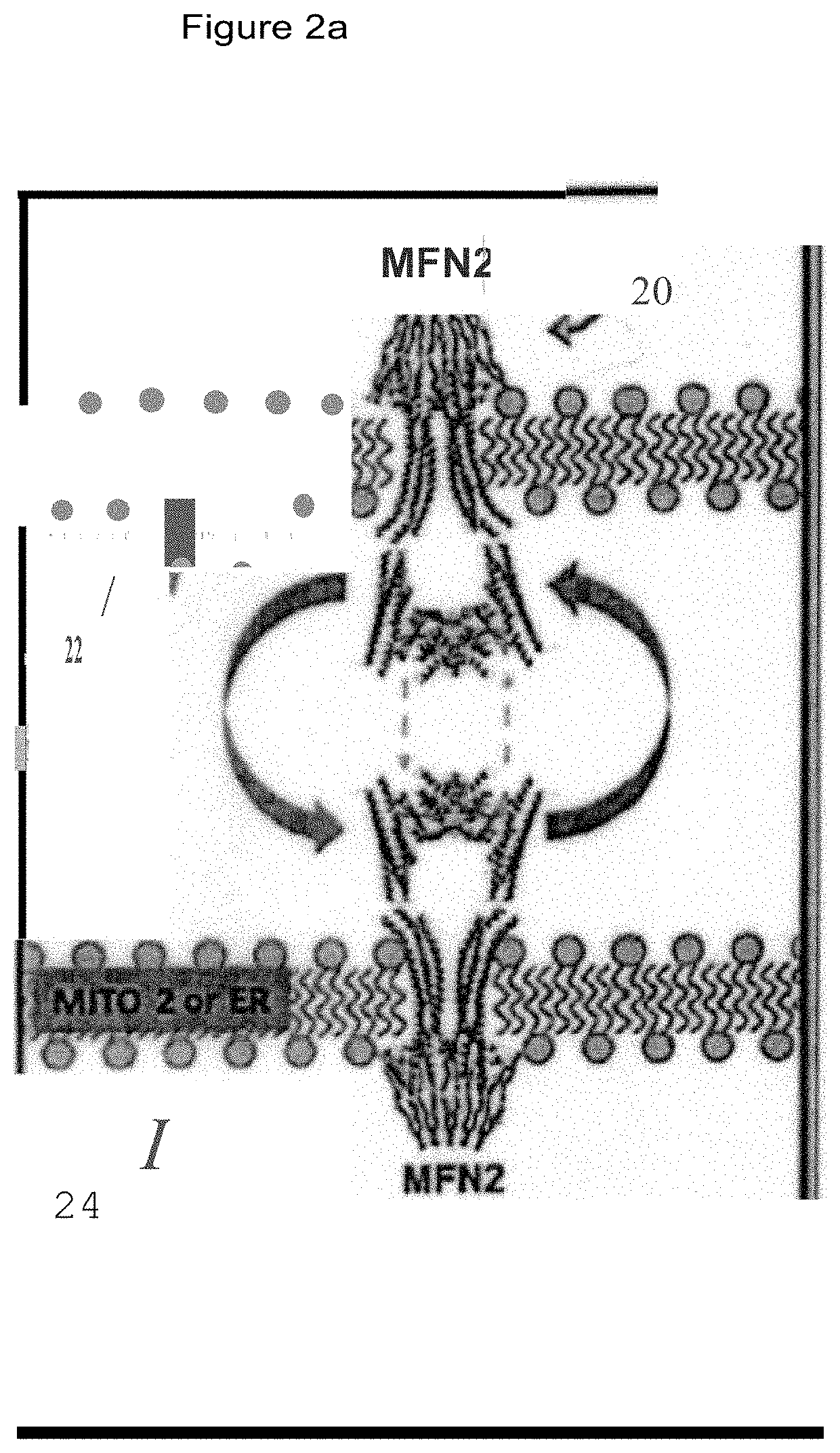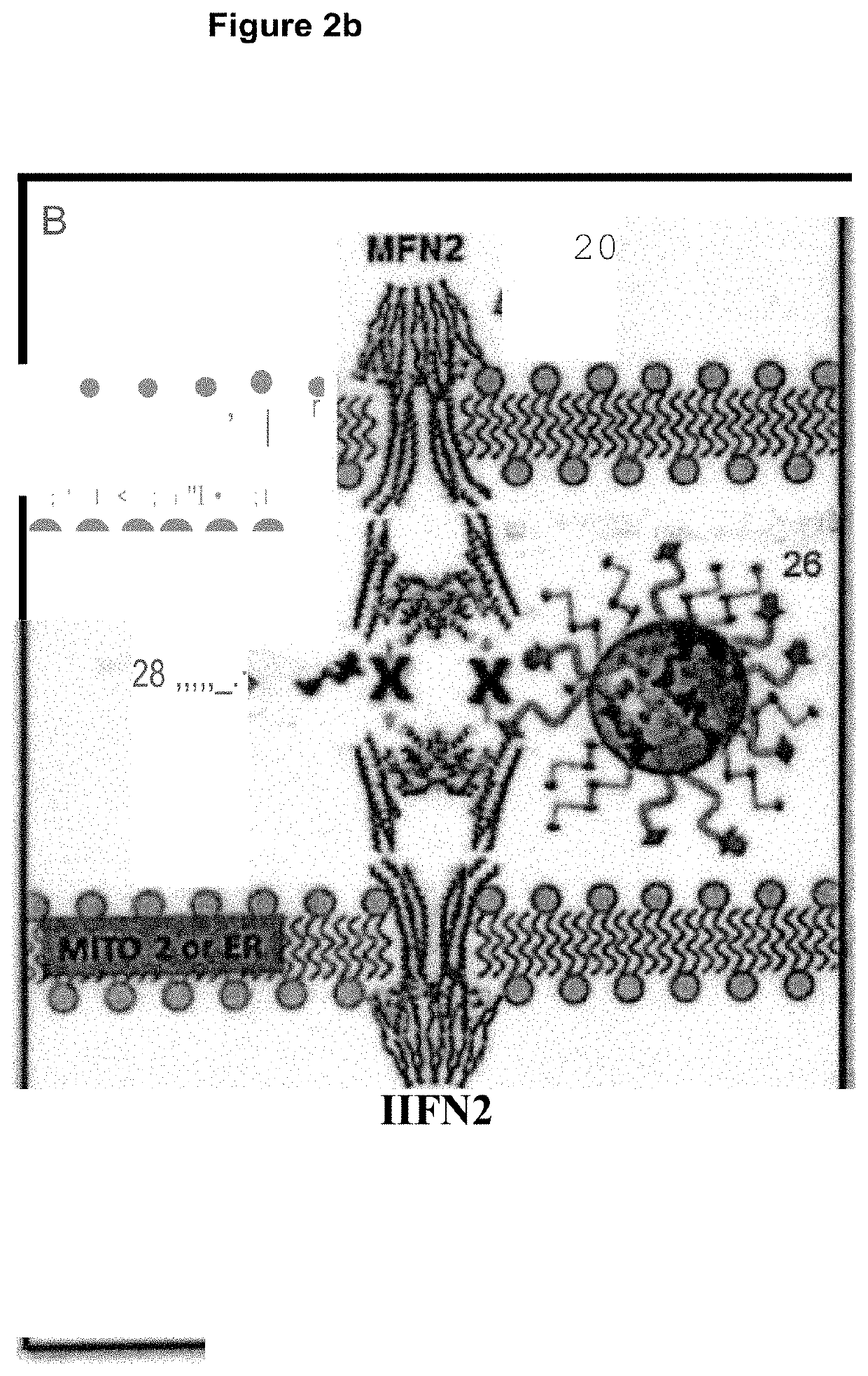EGFR/MFN2 Targeted Nanoparticles Particularly Useful For Treating Multidrug Resistant Triple Negative Breast Cancer Through Mitochondrial Fusion Inhibition
a technology of mitochondrial fusion and nanoparticles, which is applied in the direction of peptide/protein ingredients, drug compositions, enzymology, etc., to achieve the effects of reducing cellular energy capacity, reducing total protein production, and reducing mitochondrial fusion
- Summary
- Abstract
- Description
- Claims
- Application Information
AI Technical Summary
Benefits of technology
Problems solved by technology
Method used
Image
Examples
Embodiment Construction
[0011]This new drug / treatment scheme is depicted in FIG. 1. The surface of the nanocarriers 1 was modified with an EGFR peptide or PEG 2 and an MFN2 peptide 4. EGFR targeting allowed active targeting of TNBC cells. When the nanocarrier binds to the EGFR receptor (16) it is internalized via a flip-flop mechanism, once inside the cell, the MFN2 residues on the surface of the nanocarrier and in the core of the nanoparticle bind to MFN2 on mitochondria (8) and blocks mitochondrial fusion with each other and with the endoplasmic reticulum. As the nanoparticle degrades, (10) the therapeutics are released (12) and the MFN2-peptide (4a) blocks MFN2 (12) and render a cell susceptible to the proapoptotic agent (14). This treatment scheme improved therapeutic outcomes for MDR TNBC by disabling the bioenergetic network (mitochondrial fusion) and maintaining fission (requirement for apoptosis).
[0012]The scheme shown in FIG. 1 can be summarized as:[0013]1. Targeting and binding to MFN2 increases ...
PUM
| Property | Measurement | Unit |
|---|---|---|
| Fraction | aaaaa | aaaaa |
| Fraction | aaaaa | aaaaa |
| Fraction | aaaaa | aaaaa |
Abstract
Description
Claims
Application Information
 Login to view more
Login to view more - R&D Engineer
- R&D Manager
- IP Professional
- Industry Leading Data Capabilities
- Powerful AI technology
- Patent DNA Extraction
Browse by: Latest US Patents, China's latest patents, Technical Efficacy Thesaurus, Application Domain, Technology Topic.
© 2024 PatSnap. All rights reserved.Legal|Privacy policy|Modern Slavery Act Transparency Statement|Sitemap



